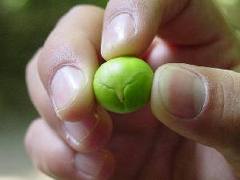
 By Ioulia Fenton and Adam Nelson, Institute of Advanced Development Studies (INESAD) La Paz, Bolivia
By Ioulia Fenton and Adam Nelson, Institute of Advanced Development Studies (INESAD) La Paz, Bolivia
The world’s global food and agriculture system is not working. On the one end, the Green Revolution has converted much farmland into industrial agricultural production that uses man-made chemical pesticides and fertilizers instead of methods that are more harmonious with nature. This has led to the loss of biodiversity as tillage and use of pesticides have killed off or deterred other plant and animal species. It has also helped fuel climate change as more and more forests are cut down for conversion to agriculture, while chemical pollution has furthered air, water, and land pollution. It has also led to the sprouting of a multi billion dollar a year genetically modified crops industry with plants engineered in genetics labs to be compatible only with certain companies’ chemical agricultural inputs. Far from delivering the promised gains in yields and greater incomes for developing country farmers, it has led to pesticide dependency and spiraling cycles of debt and death as smallholders fail to keep up (see GSDM April 2012 issue on Farmer Suicides in India for more details).
On the other end of the system, every year the world produces enough food to adequately feed and nurture every human being on the planet. Yet, already huge disparities in access keep growing as advanced nations waste enough food to feed three billion additional people, while one billion of their neighbors in the South face crippling problems of severe under-nutrition. The problem is complicated by the fact that—as a result of an industrial food business system geared towards longer shelf-life and bigger sales and due to poor policy and individual decisions—much of the food that does reach both rich and poor consumers is highly processed and loaded with salt, sugars, and fats, while lacking even the basic nutrients. This has led to widespread obesity throughout advanced and developing nations and more deaths are now attributed to related non-communicable diseases—heart attacks, type 2 diabetes, osteoporosis, and the like—worldwide than to any other cause.
See Also: “The 10 Women Who Inspire Me Always”
Although the situation may seem dire, there is something that everyone can do to make a difference. Fortunately, individuals, communities, and organizations around the world are taking action—big and small—to address different challenges along the food and agriculture chain. As part of the inspiration issue, we bring you 12 tales of such nuggets of positivity that prove that the scale of the problem need not cause depression, paralysis, and inaction. Rather, that taking on smaller, focused chunks of the issue can lead to impressive results and real impact on the health and lives of others.
1. Urban gardening greens Johannesburg in a bid to tackle climate change.
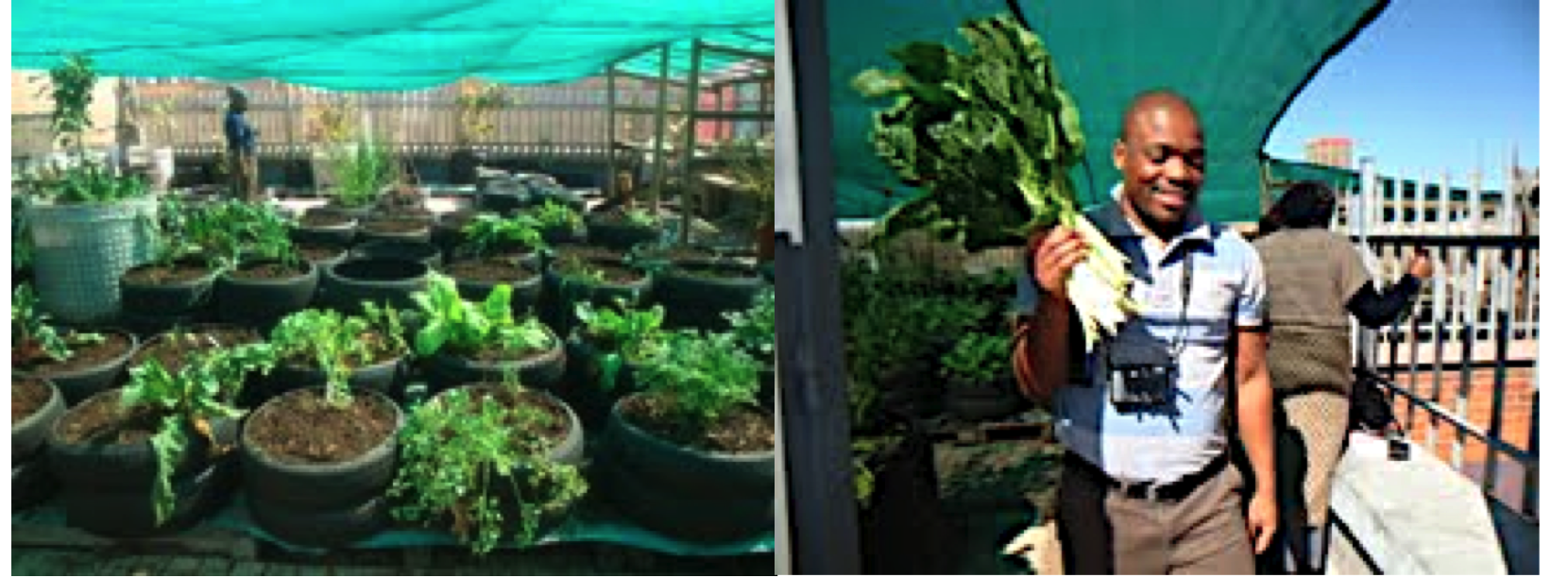
Tlhago means nature in Afrikaans. And it is nature that the Tlhago Primary Agricultural Cooperative has brought to the roof-scape of Johannesburg, South Africa. The project was started in 2010 by Tshediso Phahlane and his enthusiastic team-mates by securing funding from the Johannesburg Development Agency (JDA) to create the first garden on a building rooftop donated by the city’s Affordable Housing Company (Afcho). The organization’s goal is to tackle climate change (CC) by educating youth and community members about its causes and effects. It also teaches them how urban gardening can be part of the solution to environmental problems, while minimizing unemployment, poverty, and malnutrition.
The cooperative does much of its teaching in the communities’ own languages and so far, through outreach and educational activities, it has transferred urban gardening skills to more than 100 people from local communities. Since its conception in July 2010, the cooperative’s six organizers have planted two rooftop gardens at the heart of the metropolis and they dream of one day greening the entire metropolis.
2. Forum for the Future is helping the food industry be more sustainable
Forum for the Future—a global independent non-profit that seeks system-wide solutions to global challenges—believes that, by fundamentally changing their operating models, businesses can be the key to future sustainability. They work with major and smaller industry players—like PepsiCo, Target, Unilever, supermarket chains Marks and Spencer and Tesco, and smaller, dynamic enterprises like the farmer’s networking platform Sustaination, organic baby food producer Ella’s Kitchen, and Fair Trade-focused Cafédirect—to help them see the world differently. The PepsiCo Global Scenarios and Strategy 2030 project, for example, included interviews with more than 100 experts from within and outside the industry and a series of workshops to engage key people across the business. It illustrated to leaders that things like obesity and climate change are not merely public or individual problems, but, in fact, represent significant risk factors as far as profitability and viability of PepsiCo itself.
There is a big difference between being a little greener and being truly sustainable, and the ultimate vision of the Forum is to help companies become the latter. For example, one of the Forum’s pioneer partners Kingfisher—a non-food retailer that sells things like lawnmowers and paint—has developed a vision of becoming a net-positive company in terms of social and environmental impact.
3. Returning produce to food deserts in Chicago

Sheelah Muhammad is the co-founder of Fresh Moves—a project working for food justice in Chicago’s poorest areas. The organization employs five people from the communities in which they operate—prioritizing difficult-to-employ individuals who struggle to find work elsewhere—to bring fresh fruit and vegetables to communities that lack greengrocers or other sources of healthy food options. Their vehicle of choice? A converted city bus operating as a mobile greengrocer’s.
Today, under the slogan “No more food deserts. The drought is over!” Fresh Moves operates a weekly route stopping in 12 different locations in Chicago’s West side. The bus has been converted with multiple vertical rows of fruit, vegetable, and greens-filled greengrocer baskets on the inside (over 40 different products in total) and painted in crimson-red with ripe bananas, carrots, and watermelons on the outside. The produce offered is as seasonal and local as possible—the project sources goods from Chicago’s urban agriculture initiatives, such as Windy City Harvest and Growing Power, and supports African-American farmers outside the city.
4. Re-linking sustainable education to the rural job market
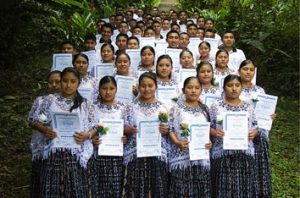
Steve Dudenhoefer is the founder of Ak’Tenamit, an indigenous-run non-governmental organization (NGO) in Guatemala. They recognized early that the country’s education system was de-linked from the potential job market and over the years have developed their own methodology providing appropriate vocational training for indigenous boys and girls from rural areas to become future leaders in their communities and generators of their own wealth. Set in a remote location on the Rio Dulce, the curriculum is implemented in the Ak’Tenamit boarding school, serving as an academy and practical training village. It houses an on-site restaurant and handicraft shop where students from hundreds of different rural communities receive some of their 3,000 hours of practical training in leadership, sustainable tourism, sustainable agriculture, and community well-being, instead of training as accountants or secretaries. Students also learn about, preserve, and identify with their Mayan language and culture, something that has been actively suppressed throughout much of Guatemalan history.
5. Guerilla Gardening is Redrawing Green-Fingered Battle Lines

Richard Reynolds lives in a relatively cheap, small, inner city flat in a large, grey, 1970s purpose-built, ex-council authority block. Unfortunately, as with most cities around the world, this relative affordability comes at a price—the surroundings tend to be as grey as the buildings themselves. As a frustrated gardener who grew up in the countryside, he decided to do something about that. Initially going out alone, under the cover of darkness, he began to slowly and secretly reclaim the darkest of spaces by planting grasses, shrubs, and flowers on abandoned grim lots.
He called it Guerilla Gardening, blogged about it, and soon found that he was not alone—at the last count of his followers, there were more than 83,000 gardening guerillas around the globe causing gorgeous green havoc with nothing but green fingers, a handful of seeds, clippers, and spades.
6. Revitalizing Uganda’s agricultural and culinary traditions
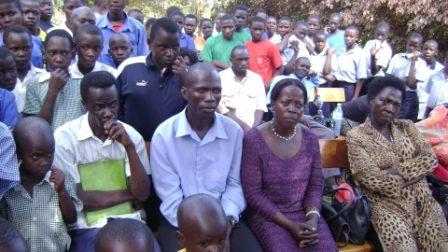
In the Mukono District of Uganda, Developing Innovations in School Cultivation (DISC) has set out to educate the next generation in hopes of continuing Uganda’s agricultural and culinary traditions. At Kisoga Secondary School in Kampala students are being taught to manage a sustainable school garden that produces fresh fruits and vegetables. Food from the garden, served at lunch, has significantly decreased child malnutrition in the village.
DISC coordinators, Edward Mukiibi and Roger Sserunjogi, have also been improving young students’ views towards agriculture. Due to their work in reversing stereotypes, students no longer see agriculture as a burden, punishment, or a last resort, but are starting to see it as a viable alternative with which to make money and assist their communities. With recent support form Slow Food International, DISC has expanded its original program to 15 other schools.
7. Using ancient technologies to address today’s food and agriculture problems
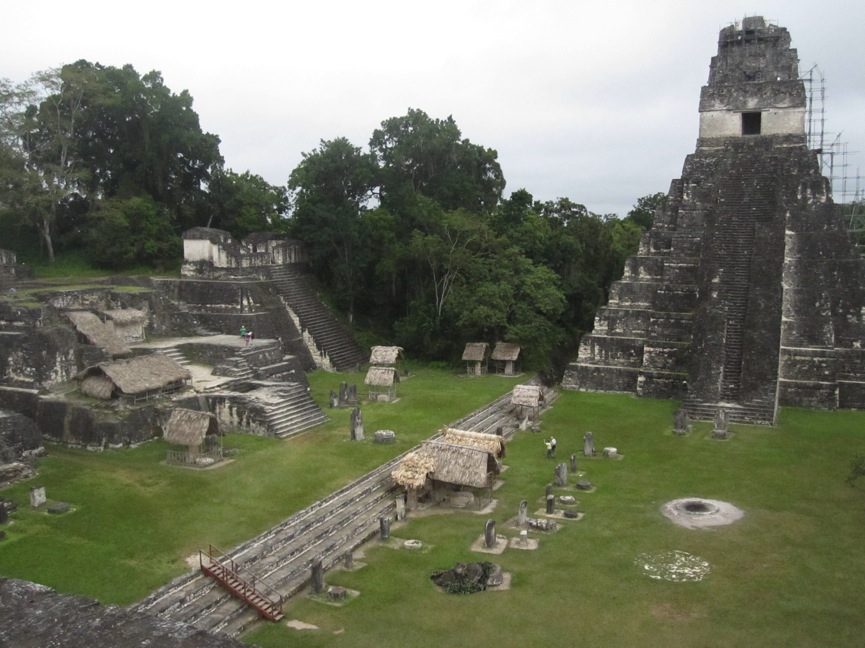
The borders and surrounding regions of Mexico, Guatemala, and Belize were once home to millions of people who managed to thrive despite the area’s poor soils, climate variability, and pronounced wet and dry seasons. To this day, the area has never been occupied to the same levels, partly because modern technology has not been able to practically resolve these problems. In an attempt to find a solution, Dr. Ezgi Akpinar Ferrand—a Turkish researcher working at Southern Connecticut State University—started conducting research on a relatively simple ancient Mayan system of human-made ponds called aguadas—that were lined with locally-sourced natural materials such as impermeable clay, plaster, and stone—as an alternative to more modern agricultural practices. With plentiful water reserves collected in the aguadas, filtered for consumption with connecting silting tanks, they represent a manageable way to provide water for agricultural, drinking, and other needs.
Now Dr. Akpinar Ferrand has teamed up with ethnographer Dr. Betty Faust on an applied project—reconstructing an ancient canal irrigation system with raised agricultural fields to help the struggling Mayan farming community of Pich, a village of 2,000 inhabitants in the state of Campeche, Mexico. If successfully reconstructed, this system would help nourish the surrounding land, increase income and water security, and be a model for other populations living in the area.
8. Changing food environments one policy at a time
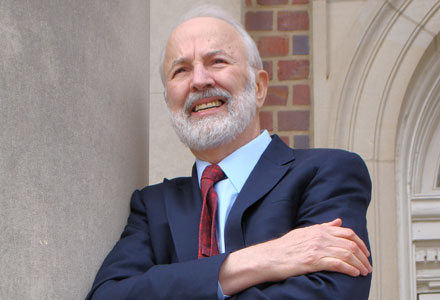
Following in the footsteps of advanced nations, much of the developing world is undergoing the nutrition transition—rapid changes in the types of foods that are available and consumed that lead to diets shifting from traditional plant-based and home-cooked foods to meat-derived and processed products. This is accompanied by an epidemiological transition from infectious to chronic, non-communicable diseases such as obesity, diabetes, and cardiovascular disease, which are now killing more of the world’s people than anything else.
One culprit is the growth of the sugary drinks industry, and for many, like the distinguished Professor of Global Nutrition at the University of North Carolina’s School of Public Health, Dr. Barry Popkin, the solution lies in changing public policies to make healthier options more widely available and easily accessible to the public. In 2006, Popkin launched the U.S Beverage Guidance Panel, which successfully brought the discussion over the problem of sugary intake to nutritionists and policy makers in the U.S and around the world. He has gone on to contribute significantly to the Mexican Beverage Guidance Panel, too, which eventually led to 20 million people on government-funded food programs to switch from whole milk to 1.5 percent milk and to schools cutting out sugary beverages. To help governments measure the impact of the problem, Dr. Popkin has conducted National Health and Nutrition Surveys in China, the Philippines, and the United Arab Emirates, while also advising decision-makers on national healthy food and drink policies and programs in South Africa, Spain, and the United Kingdom.
9. Fighting desertification in the Sahel
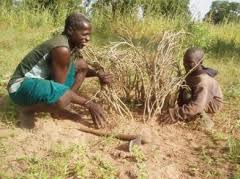
Sahel Eco is a non-profit organization helping to improve the lives of those living in Mali’s desert and semi-desert regions. Desertification due to deforestation represents the biggest threat to Malian lifestyle, where 70 per cent of the population lives on less than a dollar a day and depends heavily on rainfall to water their fields and animals. Working predominately in the Mopti, Segou, and Koulikoro regions of Mali, the organization is addressing the issue by continuing the work of SOS Sahel International UK. Members of Sahel Eco are showing farmers that proper tree management will protect soils and provide economic benefits through timber, fuel, animal feed, fruits, herbal medicines, and even raw material for mats, baskets, and hats. Through demonstrating the benefits of agro-forests, Sahel Eco has been building support for and improving local knowledge of tree management to dramatically impact the encroaching desertification in Mali.
10. One man’s ingenious animal waste filtration system is increasing India’s sugarcane yields
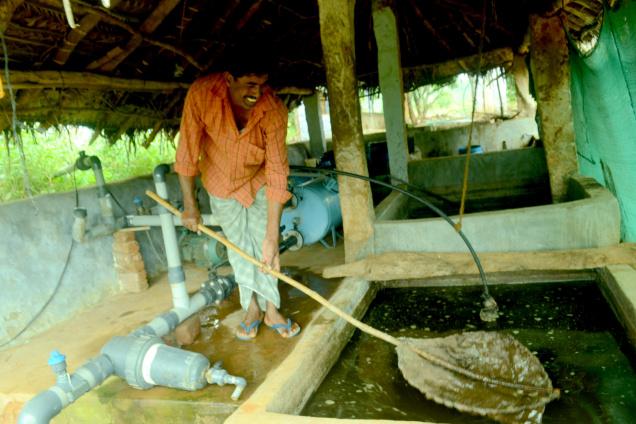
G. R. Sakthivel, an Indian sugarcane farmer and a member of Erode’s organic farmers’ federation, has developed an ingenious way to filter cattle waste to create higher sugarcane yields while decreasing his labor input. The system first collects and mixes cattle dung and urine. Then, a series of filtration systems separates solid matter, which is used for biogas production. The remaining nitrate-rich, organic liquid is used as fertilizer and dispersed through a drip irrigation system. The natural fertilizer not only increases yields, but also increases the presence of earthworms and the soil’s water-retaining capacity. This, in return, means Sakthivel spends less time and effort re-working soils hardened by chemical fertilizers, while increasing his income. The system has the potential to save farmers up to Rs.27,000 (about $500) per acre and promises to work for other crops, too. Already ten sugarcane farmers have adopted the system in the Sathyamangalam region and others are following suit with great results.
11. Back to the Maya Nut future

Though generally not consumed by modern populations, the Maya Nut has historically been a vital and nutritious staple of the Central American Maya. Incredibly nutritious, it is high in calcium, fiber, iron, folate, potassium, antioxidants, and can be eaten by both people and livestock. It also provides many ecosystem services to rainforests and people—it protects watersheds and biodiversity and the Maya Nut tree is perfect for reforestation by providing valuable shade and protection from rain and erosion all year around.
Now, with the help of the Maya Nut Institute—which teaches rural communities over 100 ways to prepare the nut to produce savory and sweet foods, drinks, baked goods, sauces, and condiments that they can consume or sell—it is also a valuable source of income to indigenous populations across Central America. To date, the institute has reached over 1,200 communities across Guatemala, Honduras, El Salvador, Nicaragua, and Mexico.
By running workshops on how to cook and market their own goods, the institute has made considerable impacts on the lives of women too. Since its conception, 17,000 women have been trained resulting in the establishment of 20 separate woman-run businesses that produce and market Maya Nut products across Central America.
12. Re-greening the Jordanian desert
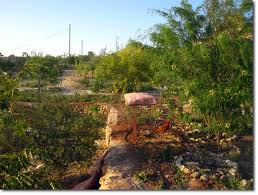
Founder of the Permaculture Research Institute of Australia, Geoff Lawton, has embarked on a new mission to regreen the Jordanian desert. For the task, he has developed a basic system of permaculture—a philosophy of working with, rather than against nature in all human endeavors—he calls an “anti-evaporation” design. The system restores the productivity of the Sahel dessert soils that are too high in salt content for agricultural production; it utilizes mulching, compost beds, and sunken, shaded garden beds to increase organic matter while reducing salt buildups.
By using a 3,000 square meter demonstration site in Jordan, Lawton has been able to show locals how to work and practice his anti-evaporation system. By doing so, he is restoring the soil’s fertility and turning the Jordanian desert back into an oasis. With agricultural lands becoming less productive due to salinization, Lawton has provided a system that not only restores soil nutrients, but one that is also economically and environmentally beneficial.
From innovations that work at the local community levels to those helping change how businesses operate and the policies that shape our environment, the world is full of inspiring examples that show that everyone can do something to make a difference. We thank guerilla gardener Richard Reynolds in London, rooftop climate change changer Tshediso Phahlane in South Africa, youth engagers Edward Mukiibi and Roger Sserunjogi in Uganda, organic waste-filterer Mr. Sakthivel in India, the global food policy fighter Barry Popkins, and everyone else for their continuous efforts in making the world’s food and agriculture system more productive, healthful, and environmentally sustainable.
Ioulia Fenton leads the food and agriculture research stream at the Center for Economic and Environmental Modeling and Analysis (CEEMA) at the Institute of Advanced Development Studies (INESAD) in La Paz, Bolivia. Adam Nelson is a research and communications intern with INESAD.
Do you know of any inspirational stories related to sustainable agricultural practices? Share in the comments below.
This article originally appeared in the October 2012 issue of Global South Development Magazine that focused on inspiration.












Thanks for sharing your thoughts. I truly appreciate
your efforts and I am waiting for your further post thanks once again.